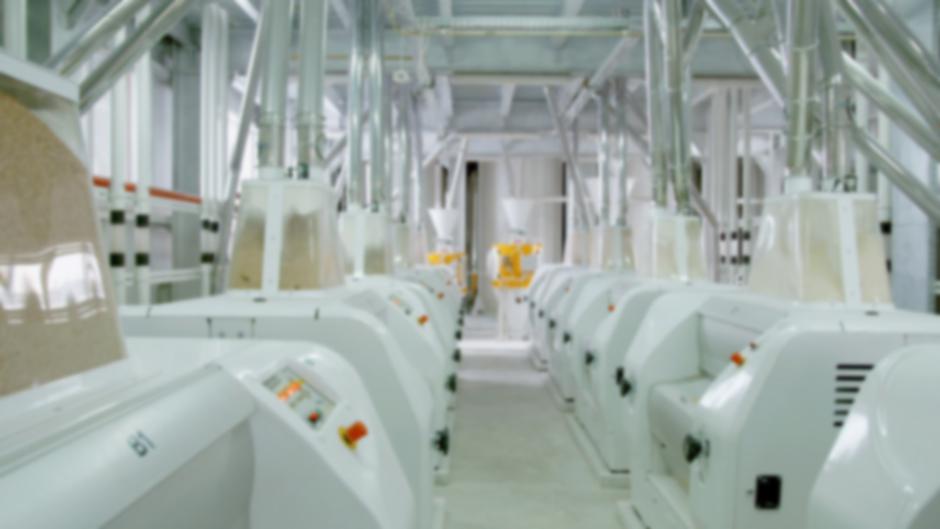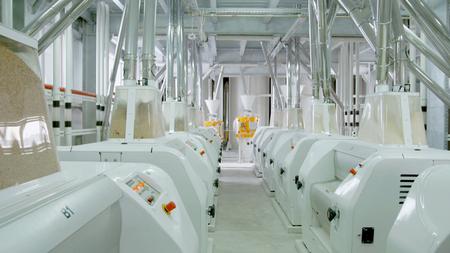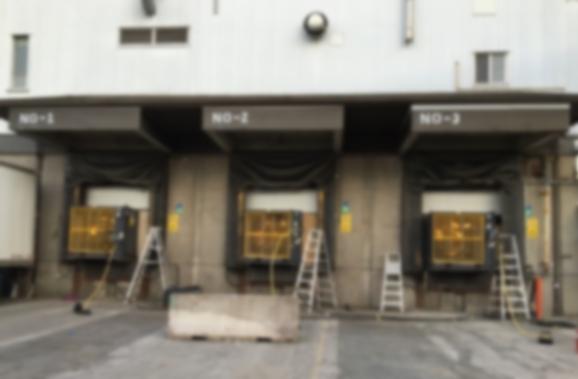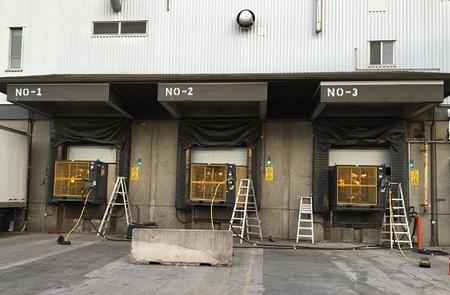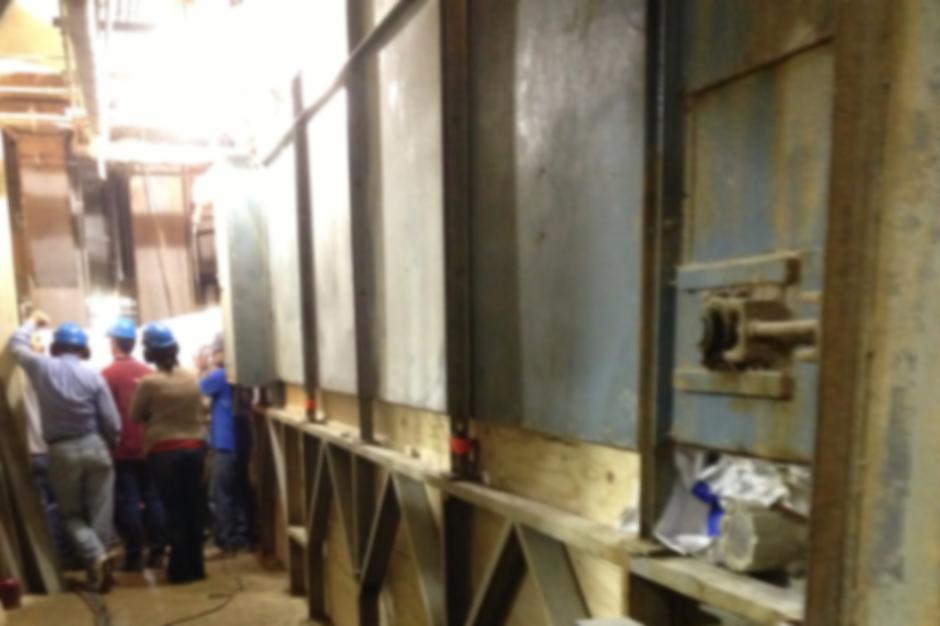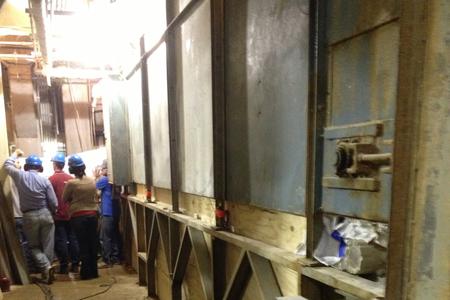Managing Insects in Industrial Structures Worldwide for Over 15 Years
Heat treatment using elevated temperatures (122-140°F) has been used for over a century and is making a comeback as a non-chemical, non-corrosive, non-toxic and effective alternative to chemical fumigants.
Broadly, Stored Product Insects include:
- Beetles
- Red Flour Beetles (Tribolium castaneum), Confused Flour Beetles (Tribolium confusum), Warehouse Beetles (Trogoderma variabile), Sawtoothed Grain Beetles (Oryzaephilus surinamensis), Cigarette Beetles (Lasioderma serricorne), Drugstore Beetles (Stegobium paniceum), Lesser Grain Borer (Rhyzopertha dominica)
- Weevils
- Rice Weevils (Sitophilus oryzae), Wheat Weevils (Sitophilus granarius)
- Moths
- Indian Mealmoths (Plodia interpunctella), Angoumois Grain Moths (Sitotroga cerealella)
Insect infestations are managed with fumigants (Phosphine, methyl bromide, and sulfuryl fluoride), insecticide foggings/aerosols and residual insecticides. Chemical fumigants pose environmental concerns and are hazardous due to toxicity. For example, methyl bromide has been phased out since 2005 as it depletes stratospheric ozone layer (Montreal Protocol). Phosphine has been known to have corrosive effect on electrical circuitry and some insects have developed tolerance/resistance to it. Sulfuryl fluoride has concerns regarding the fluoride residues. Foggings/aerosols kill by surface contact and may not be effective as they have low penetration capability.
Unique Advantages & Benefits
TEMP-AIR, Inc.’s “positive pressurization” process offers unique advantages and benefits over chemical fumigations and other techniques of heat treatments. These are:
- No sealing is required as the space to be heated is under positive pressure
- Allows inspections during the heat treatment that helps identify areas of insect emergence and take corrective action such as cracks and crevices treatment
- Areas adjacent to structure under heat treatment such as shipping, offices etc. remain operational
- Low downtime and no associated cost of insurance and need to contact local authorities
- No phase-out
A Variety of Applications
Our professional Thermal Remediation® staff has over 15 years of experience performing industrial heat treatments in food processing plants, flour mills, warehouses and storage structures (bins/silos) in North America, Europe and Asia. Heat Treatment Applications Include:
- Food Processing Plants
- Pasta, Cereal, Bakeries, Baby Food, Pet Food
- Milling Industry
- Flour Mills, Rice Mills, Wheat Mills, Rye Mills
- Storage Structures
- Bins & Silos – concrete and steel
- Warehouses
- Food, Beverage
- Organic Processing Plants and Storage
Our Process
The Thermal Remediation® patented process uses 100% outside/fresh air to create positive pressure within the structure being heat-treated while managing the hot air flow using a configuration of high temperature fabric ductwork, fans and a real-time wireless temperature monitoring system. Our process involves raising the internal temperature of the structure between 122-140°F (50-60°C) using direct-fired make-up air heaters that use propane or natural gas as source of fuel.
More Details
Our company performs both partial and full facility treatments. Partial, spot treatments are suited to heat treat partial areas of a structure with high insect infestation levels. Entire facility heat treatments eliminate possibility of insect migration and cross-infestations and get rid of residual insect populations resident in the facility. Essentially, heat treatment is a structural treatment and is not recommended for commodities/product as the latter are inherently good insulators or bad conductors of heat. Therefore, the product/commodities/flour/grain has to be moved out prior to commencement of heat treatment. Heat is an effective tool in multiple strategies that are employed under the IPM (Integrated Pest Management) practices.
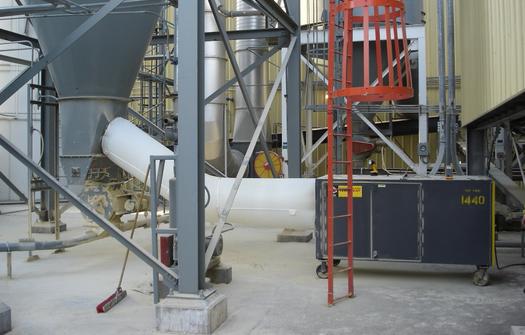
Our Equipment
The three major heat treatment components are:
- Heaters
- Fans
- Temperature Monitoring System
Heaters
THP-series
The most common type of heaters used in Thermal Remediation® industrial heat treatments are THP-series direct-fired make-up air heaters. THP-series heaters feature electronic modulating burner controls that automatically adjust gas flow taking into account the set discharge and ambient temperature. These direct-fired heaters are equipped with a high velocity centrifugal blower providing large volumes of air and high static pressure allowing the equipment to work well with high temperature ductwork.
ETHP-series
ETHP-series electric heaters may also be used for smaller spaces or storage structures (bins/silos) to manage stored product insects. This series has digital temperature controls providing precise temperature control. Its proof-of-air-flow control senses obstructed air intake and prevents coil from energizing. These electric heaters contain a built-in circuit breaker.
Fans
Our company uses custom designed, high temperature fans that provide a high CFM with low amperage draw. These fans are necessary to evenly distribute heated air throughout the space and target high infestation zones. The selection of fans depends on the layout of the space being heat treated and size selection ranges from 16 to 48 inches in diameter. The airflow management plays a crucial role in the success of a heat treatment.
Temperature Monitoring Systems
The expandable, wireless temperature monitoring system includes a laptop installed with proprietary temperature recording software, receiver, repeater and wireless temperature transmitters/sensors. The real-time temperature monitoring helps identify hot and cold spots in the treated area as well as regulates and controls hot air distribution. Comprehensive graphical temperature charts for the entire duration of a heat treatment are provided to the client along with the final report of the heat treatment.
Case Studies
To highlight the most common types of industrial stored product pest heat treatments scenarios we encounter, we have provided case studies showing brief overviews on past treatments.
Direct-fired propane heaters were used to kill stored product insects in a dry roast room and a storage room.
Read Full Case Study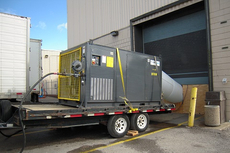
Make-up air gas heaters were used to eliminate stored product pests in a tempering room.
Read Full Case Study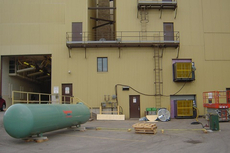
This study compares the results of heat treatment vs. chemical fumigation.
Read Full Case Study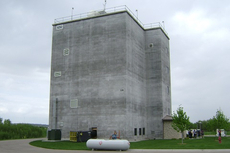
Want to Learn More?
Our Thermal Remediation® Senior Scientist Dr. Raj Hulasare would be happy to discuss your facility’s unique stored product pest situation and develop a heat treatment solution for your specific needs.
Send Dr. Raj a Message